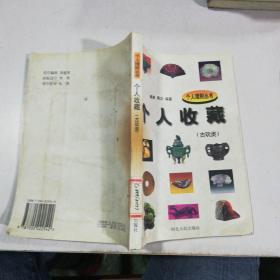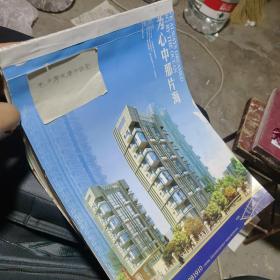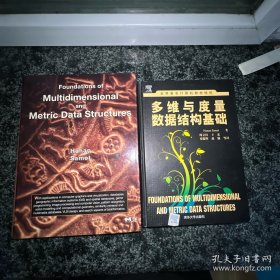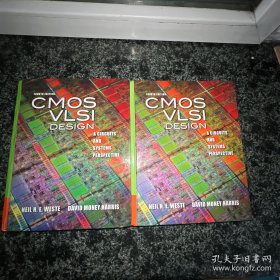
个人收藏,Programming:Principles and Practice Using C++
个人收藏书籍一般不再出售,说实话,如果谁让你读这个书学习c++,那就纯属误人子弟,但是因为是c++之父的书籍,收藏一本,也就仅此而已了,英文原版,软精装锁线,铜版纸印刷
¥ 499 九五品
仅1件
作者Bjarne Stroustrup
出版社Addison-Wesley Professional
出版时间2014-05
装帧其他
上书时间2024-11-18
- 最新上架
商品详情
- 品相描述:九五品
图书标准信息
- 作者 Bjarne Stroustrup
- 出版社 Addison-Wesley Professional
- 出版时间 2014-05
- ISBN 9780321992789
- 装帧 其他
- 开本 其他
- 纸张 其他
- 【内容简介】
-
An Introduction to Programming by the Inventor of C++
Preparation for Programming in the Real World
The book assumes that you aim eventually to write non-trivial programs, whether for work in software development or in some other technical field.
Focus on - 【作者简介】
- Bjarne Stroustrup is the designer and original implementer of C++, as well as the author of The C++ Programming Language, Fourth Edition (Addison-Wesley, 2013), and A Tour of C++ (Addison-Wesley, 2014) and many popular and academic publications. Dr. Stroustrup is a managing director at Morgan Stanley in New York City, as well as a visiting professor at Columbia University and a Research distinguished professor at Texas A&M University. He is a member of the U.S. National Academy of Engineering, an IEEE Fellow, and an ACM fellow. His research interests include distributed systems, design, programming techniques, software development tools, and programming languages. He is actively involved in the ISO standardization of C++.
- 【目录】
-
Contents
Preface xxv
Chapter 0 Notes to the Reader 1
0.1 The structure of this book 2
0.1.1 General approach 3
0.1.2 Drills, exercises, etc. 4
0.1.3 What comes after this book? 5
0.2 A philosophy of teaching and learning 6
0.2.1 The order of topics 9
0.2.2 Programming and programming language 10
0.2.3 Portability 11
0.3 Programming and computer science 12
0.4 Creativity and problem solving 12
0.5 Request for feedback 12
0.6 References 13
0.7 Biographies 13
Chapter 1 Computers, People, and Programming 17
1.1 Introduction 18
1.2 Software 19
1.3 People 21
1.4 Computer science 24
1.5 Computers are everywhere 25
1.5.1 Screens and no screens 26
1.5.2 Shipping 26
1.5.3 Telecommunications 28
1.5.4 Medicine 30
1.5.5 Information 31
1.5.6 A vertical view 33
1.5.7 So what? 34
1.6 Ideals for programmers 34
Part I The Basics 41
Chapter 2 Hello, World! 43
2.1 Programs 44
2.2 The classic first program 45
2.3 Compilation 47
2.4 Linking 51
2.5 Programming environments 52
Chapter 3 Objects, Types, and Values 59
3.1 Input 60
3.2 Variables 62
3.3 Input and type 64
3.4 Operations and operators 66
3.5 Assignment and initialization 69
3.5.1 An example: detect repeated words 71
3.6 Composite assignment operators 73
3.6.1 An example: find repeated words 73
3.7 Names 74
3.8 Types and objects 77
3.9 Type safety 78
3.9.1 Safe conversions 79
3.9.2 Unsafe conversions 80
Chapter 4 Computation 89
4.1 Computation 90
4.2 Objectives and tools 92
4.3 Expressions 94
4.3.1 Constant expressions 95
4.3.2 Operators 97
4.3.3 Conversions 99
4.4 Statements 100
4.4.1 Selection 102
4.4.2 Iteration 109
4.5 Functions 113
4.5.1 Why bother with functions? 115
4.5.2 Function declarations 117
4.6 vector 117
4.6.1 Traversing a vector 119
4.6.2 Growing a vector 119
4.6.3 A numeric example 120
4.6.4 A text example 123
4.7 Language features 125
Chapter 5 Errors 133
5.1 Introduction 134
5.2 Sources of errors 136
5.3 Compile-time errors 136
5.3.1 Syntax errors 137
5.3.2 Type errors 138
5.3.3 Non-errors 139
5.4 Link-time errors 139
5.5 Run-time errors 140
5.5.1 The caller deals with errors 142
5.5.2 The callee deals with errors 143
5.5.3 Error reporting 145
5.6 Exceptions 146
5.6.1 Bad arguments 147
5.6.2 Range errors 148
5.6.3 Bad input 150
5.6.4 Narrowing errors 153
5.7 Logic errors 154
5.8 Estimation 157
5.9 Debugging 158
5.9.1 Practical debug advice 159
5.10 Pre- and post-conditions 163
5.10.1 Post-conditions 165
5.11 Testing 166
Chapter 6 Writing a Program 173
6.1 A problem 174
6.2 Thinking about the problem 175
6.2.1 Stages of development 176
6.2.2 Strategy 176
6.3 Back to the calculator! 178
6.3.1 First attempt 179
6.3.2 Tokens 181
6.3.3 Implementing tokens 183
6.3.4 Using tokens 185
6.3.5 Back to the drawing board 186
6.4 Grammars 188
6.4.1 A detour: English grammar 193
6.4.2 Writing a grammar 194
6.5 Turning a grammar into code 195
6.5.1 Implementing grammar rules 196
6.5.2 Expressions 197
6.5.3 Terms 200
6.5.4 Primary expressions 202
6.6 Trying the first version 203
6.7 Trying the second version 208
6.8 Token streams 209
6.8.1 Implementing Token_stream 211
6.8.2 Reading tokens 212
6.8.3 Reading numbers 214
6.9 Program structure 215
Chapter 7 Completing a Program 221
7.1 Introduction 222
7.2 Input and output 222
7.3 Error handling 224
7.4 Negative numbers 229
7.5 Remainder: % 230
7.6 Cleaning up the code 232
7.6.1 Symbolic constants 232
7.6.2 Use of functions 234
7.6.3 Code layout 235
7.6.4 Commenting 237
7.7 Recovering from errors 239
7.8 Variables 242
7.8.1 Variables and definitions 242
7.8.2 Introducing names 247
7.8.3 Predefined names 250
7.8.4 Are we there yet? 250
Chapter 8 Technicalities: Functions, etc. 255
8.1 Technicalities 256
8.2 Declarations and definitions 257
8.2.1 Kinds of declarations 261
8.2.2 Variable and constant declarations 262
8.2.3 Default initialization 263
8.3 Header files 264
8.4 Scope 266
8.5 Function call and return 272
8.5.1 Declaring arguments and return type 272
8.5.2 Returning a value 274
8.5.3 Pass-by-value 275
8.5.4 Pass-by-const-reference 276
8.5.5 Pass-by-reference 279
8.5.6 Pass-by-value vs. pass-by-reference 281
8.5.7 Argument checking and conversion 284
8.5.8 Function call implementation 285
8.5.9 constexpr functions 290
8.6 Order of evaluation 291
8.6.1 Expression evaluation 292
8.6.2 Global initialization 293
8.7 Namespaces 294
8.7.1 using declarations and using directives 296
Chapter 9 Technicalities: Classes, etc. 303
9.1 User-defined types 304
9.2 Classes and members 305
9.3 Interface and implementation 306
9.4 Evolving a class 308
9.4.1 struct and functions 308
9.4.2 Member functions and constructors 310
9.4.3 Keep details private 312
9.4.4 Defining member functions 314
9.4.5 Referring to the current object 317
9.4.6 Reporting errors 317
9.5 Enumerations 318
9.5.1 “Plain” enumerations 320
9.6 Operator overloading 321
9.7 Class interfaces 323
9.7.1 Argument types 324
9.7.2 Copying 326
9.7.3 Default constructors 327
9.7.4 const member functions 330
9.7.5 Members and “helper functions” 332
9.8 The Date class 334
Part II Input and Output 343
Chapter 10 Input and Output Streams 345
10.1 Input and output 346
10.2 The I/O stream model 347
10.3 Files 349
10.4 Opening a file 350
10.5 Reading and writing a file 352
10.6 I/O error handling 354
10.7 Reading a single value 358
10.7.1 Breaking the problem into manageable parts 359
10.7.2 Separating dialog from function 362
10.8 User-defined output operators 363
10.9 User-defined input operators 365
10.10 A standard input loop 365
10.11 Reading a structured file 367
10.11.1 In-memory representation 368
10.11.2 Reading structured values 370
10.11.3 Changing representations 374
Chapter 11 Customizing Input and Output 379
11.1 Regularity and irregularity 380
11.2 Output formatting 380
11.2.1 Integer output 381
11.2.2 Integer input 383
11.2.3 Floating-point output 384
11.2.4 Precision 385
11.2.5 Fields 387
11.3 File opening and positioning 388
11.3.1 File open modes 388
11.3.2 Binary files 390
11.3.3 Positioning in files 393
11.4 String streams 394
11.5 Line-oriented input 395
11.6 Character classification 396
11.7 Using nonstandard separators 398
11.8 And there is so much more 406
Chapter 12 A Display Model 411
12.1 Why graphics? 412
12.2 A display model 413
12.3 A first example 414
12.4 Using a GUI library 418
12.5 Coordinates 419
12.6 Shapes 420
12.7 Using Shape primitives 421
12.7.1 Graphics headers and main 421
12.7.2 An almost blank window 422
12.7.3 Axis 424
12.7.4 Graphing a function 426
12.7.5 Polygons 427
12.7.6 Rectangles 428
12.7.7 Fill 431
12.7.8 Text 431
12.7.9 Images 433
12.7.10 And much more 434
12.8 Getting this to run 435
12.8.1 Source files 437
Chapter 13 Graphics Classes 441
13.1 Overview of graphics classes 442
13.2 Point and Line 444
13.3 Lines 447
13.4 Color 450
13.5 Line_style 452
13.6 Open_polyline 455
13.7 Closed_polyline 456
13.8 Polygon 458
13.9 Rectangle 460
13.10 Managing unnamed objects 465
13.11 Text 467
13.12 Circle 470
13.13 Ellipse 472
13.14 Marked_polyline 474
13.15 Marks 476
13.16 Mark 478
13.17 Images 479
Chapter 14 Graphics Class Design 487
14.1 Design principles 488
14.1.1 Types 488
14.1.2 Operations 490
14.1.3 Naming 491
14.1.4 Mutability 492
14.2 Shape 493
14.2.1 An abstract class 495
14.2.2 Access control 496
14.2.3 Drawing shapes 500
14.2.4 Copying and mutability 503
14.3 Base and derived classes 504
14.3.1 Object layout 506
14.3.2 Deriving classes and defining virtual functions 507
14.3.3 Overriding 508
14.3.4 Access 511
14.3.5 Pure virtual functions 512
14.4 Benefits of object-oriented programming 513
Chapter 15 Graphing Functions and Data 519
15.1 Introduction 520
15.2 Graphing simple functions 520
15.3 Function 524
15.3.1 Default Arguments 525
15.3.2 More examples 527
15.3.3 Lambda expressions 528
15.4 Axis 529
15.5 Approximation 532
15.6 Graphing data 537
15.6.1 Reading a file 539
15.6.2 General layout 541
15.6.3 Scaling data 542
15.6.4 Building the graph 543
Chapter 16 Graphical User Interfaces 551
16.1 User interface alternatives 552
16.2 The “Next” button 553
16.3 A simple window 554
16.3.1 A callback function 556
16.3.2 A wait loop 559
16.3.3 A lambda expression as a callback 560
16.4 Button and other Widgets 561
16.4.1 Widgets 561
16.4.2 Buttons 563
16.4.3 In_box and Out_box 563
16.4.4 Menus 564
16.5 An example 565
16.6 Control inversion 569
16.7 Adding a menu 570
16.8 Debugging GUI code 575
Part III Data and Algorithms 581
Chapter 17 Vector and Free Store 583
17.1 Introduction 584
17.2 vector basics 586
17.3 Memory, addresses, and pointers 588
17.3.1 The sizeof operator 590
17.4 Free store and pointers 591
17.4.1 Free-store allocation 593
17.4.2 Access through pointers 594
17.4.3 Ranges 595
17.4.4 Initialization 596
17.4.5 The null pointer 598
17.4.6 Free-store deallocation 598
17.5 Destructors 601
17.5.1 Generated destructors 603
17.5.2 Destructors and free store 604
17.6 Access to elements 605
17.7 Pointers to class objects 606
17.8 Messing with types: void* and casts 608
17.9 Pointers and references 610
17.9.1 Pointer and reference parameters 611
17.9.2 Pointers, references, and inheritance 612
17.9.3 An example: lists 613
17.9.4 List operations 615
17.9.5 List use 616
17.10 The this pointer 618
17.10.1 More link use 620
Chapter 18 Vectors and Arrays 627
18.1 Introduction 628
18.2 Initialization 629
18.3 Copying 631
18.3.1 Copy constructors 633
18.3.2 Copy assignments 634
18.3.3 Copy terminology 636
18.3.4 Moving 637
18.4 Essential operations 640
18.4.1 Explicit constructors 642
18.4.2 Debugging constructors and destructors 643
18.5 Access to vector elements 646
18.5.1 Overloading on const 647
18.6 Arrays 648
18.6.1 Pointers to array elements 650
18.6.2 Pointers and arrays 652
18.6.3 Array initialization 654
18.6.4 Pointer problems 656
18.7 Examples: palindrome 659
18.7.1 Palindromes using string 659
18.7.2 Palindromes using arrays 660
18.7.3 Palindromes using pointers 661
Chapter 19 Vector, Templates, and Exceptions 667
19.1 The problems 668
19.2 Changing size 671
19.2.1 Representation 671
19.2.2 reserve and capacity 673
19.2.3 resize 674
19.2.4 push_back 674
19.2.5 Assignment 675
19.2.6 Our vector so far 677
19.3 Templates 678
19.3.1 Types as template parameters 679
19.3.2 Generic programming 681
19.3.3 Concepts 683
19.3.4 Containers and inheritance 686
19.3.5 Integers as template parameters 687
19.3.6 Template argument deduction 689
19.3.7 Generalizing vector 690
19.4 Range checking and exceptions 693
19.4.1 An aside: design considerations 694
19.4.2 A confession: macros 696
19.5 Resources and exceptions 697
19.5.1 Potential resource management problems 698
19.5.2 Resource acquisition is initialization 700
19.5.3 Guarantees 701
19.5.4 unique_ptr 703
19.5.5 Return by moving 704
19.5.6 RAII for vector 705
Chapter 20 Containers and Iterators 711
20.1 Storing and processing data 712
20.1.1 Working with data 713
20.1.2 Generalizing code 714
20.2 STL ideals 717
20.3 Sequences and iterators 720
20.3.1 Back to the example 723
20.4 Linked lists 724
20.4.1 List operations 726
20.4.2 Iteration 727
20.5 Generalizing vector yet again 729
20.5.1 Container traversal 732
20.5.2 auto 732
20.6 An example: a simple text editor 734
20.6.1 Lines 736
20.6.2 Iteration 737
20.7 vector, list, and string 741
20.7.1 insert and erase 742
20.8 Adapting our vector to the STL 745
20.9 Adapting built-in arrays to the STL 747
20.10 Container overview 749
20.10.1 Iterator categories 751
Chapter 21 Algorithms and Maps 757
21.1 Standard library algorithms 758
21.2 The simplest algorithm: find() 759
21.2.1 Some generic uses 761
21.3 The general search: find_if() 763
21.4 Function objects 765
21.4.1 An abstract view of function objects 766
21.4.2 Predicates on class members 767
21.4.3 Lambda expressions 769
21.5 Numerical algorithms 770
21.5.1 Accumulate 770
21.5.2 Generalizing accumulate() 772
21.5.3 Inner product 774
21.5.4 Generalizing inner_product() 775
21.6 Associative containers 776
21.6.1 map 776
21.6.2 map overview 779
21.6.3 Another map example 782
21.6.4 unordered_map 785
21.6.5 set 787
21.7 Copying 789
21.7.1 Copy 789
21.7.2 Stream iterators 790
21.7.3 Using a set to keep order 793
21.7.4 copy_if 794
21.8 Sorting and searching 794
21.9 Container algorithms 797
Part IV Broadening the View 803
Chapter 22 Ideals and History 805
22.1 History, ideals, and professionalism 806
22.1.1 Programming language aims and philosophies 807
22.1.2 Programming ideals 808
22.1.3 Styles/paradigms 815
22.2 Programming language history overview 818
22.2.1 The earliest languages 819
22.2.2 The roots of modern languages 821
22.2.3 The Algol family 826
22.2.4 Simula 833
22.2.5 C 836
22.2.6 C++ 839
22.2.7 Today 842
22.2.8 Information sources 844
Chapter 23 Text Manipulation 849
23.1 Text 850
23.2 Strings 850
23.3 I/O streams 855
23.4 Maps 855
23.4.1 Implementation details 861
23.5 A problem 864
23.6 The idea of regular expressions 866
23.6.1 Raw string literals 868
23.7 Searching with regular expressions 869
23.8 Regular expression syntax 872
23.8.1 Characters and special characters 872
23.8.2 Character classes 873
23.8.3 Repeats 874
23.8.4 Grouping 876
23.8.5 Alternation 876
23.8.6 Character sets and ranges 877
23.8.7 Regular expression errors 878
23.9 Matching with regular expressions 880
23.10 References 885
Chapter 24 Numerics 889
24.1 Introduction 890
24.2 Size, precision, and overflow 890
24.2.1 Numeric limits 894
24.3 Arrays 895
24.4 C-style multidimensional arrays 896
24.5 The Matrix library 897
24.5.1 Dimensions and access 898
24.5.2 1D Matrix 901
24.5.3 2D Matrix 904
24.5.4 Matrix I/O 907
24.5.5 3D Matrix 907
24.6 An example: solving linear equations 908
24.6.1 Classical Gaussian elimination 910
24.6.2 Pivoting 911
24.6.3 Testing 912
24.7 Random numbers 914
24.8 The standard mathematical functions 917
24.9 Complex numbers 919
24.10 References 920
Chapter 25 Embedded Systems Programming 925
25.1 Embedded systems 926
25.2 Basic concepts 929
25.2.1 Predictability 932
25.2.2 Ideals 932
25.2.3 Living with failure 933
25.3 Memory management 935
25.3.1 Free-store problems 936
25.3.2 Alternatives to the general free store 939
25.3.3 Pool example 940
25.3.4 Stack example 942
25.4 Addresses, pointers, and arrays 943
25.4.1 Unchecked conversions 943
25.4.2 A problem: dysfunctional interfaces 944
25.4.3 A solution: an interface class 947
25.4.4 Inheritance and containers 951
25.5 Bits, bytes, and words 954
25.5.1 Bits and bit operations 955
25.5.2 bitset 959
25.5.3 Signed and unsigned 961
25.5.4 Bit manipulation 965
25.5.5 Bitfields 967
25.5.6 An example: simple encryption 969
25.6 Coding standards 974
25.6.1 What should a coding standard be? 975
25.6.2 Sample rules 977
25.6.3 Real coding standards 983
Chapter 26 Testing 989
26.1 What we want 990
26.1.1 Caveat 991
26.2 Proofs 992
26.3 Testing 992
26.3.1 Regression tests 993
26.3.2 Unit tests 994
26.3.3 Algorithms and non-algorithms 1001
26.3.4 System tests 1009
26.3.5 Finding assumptions that do not hold 1009
26.4 Design for testing 1011
26.5 Debugging 1012
26.6 Performance 1012
26.6.1 Timing 1015
26.7 References 1016
Chapter 27 The C Programming Language 1021
27.1 C and C++: siblings 1022
27.1.1 C/C++ compatibility 1024
27.1.2 C++ features missing from C 1025
27.1.3 The C standard library 1027
27.2 Functions 1028
27.2.1 No function name overloading 1028
27.2.2 Function argument type checking 1029
27.2.3 Function definitions 1031
27.2.4 Calling C from C++ and C++ from C 1032
27.2.5 Pointers to functions 1034
27.3 Minor language differences 1036
27.3.1 struct tag namespace 1036
27.3.2 Keywords 1037
27.3.3 Definitions 1038
27.3.4 C-style casts 1040
27.3.5 Conversion of void* 1041
27.3.6 enum 1042
27.3.7 Namespaces 1042
27.4 Free store 1043
27.5 C-style strings 1045
27.5.1 C-style strings and const 1047
27.5.2 Byte operations 1048
27.5.3 An example: strcpy() 1049
27.5.4 A style issue 1049
27.6 Input/output: stdio 1050
27.6.1 Output 1050
27.6.2 Input 1052
27.6.3 Files 1053
27.7 Constants and macros 1054
27.8 Macros 1055
27.8.1 Function-like macros 1056
27.8.2 Syntax macros 1058
27.8.3 Conditional compilation 1058
27.9 An example: intrusive containers 1059
Part V Appendices 1071
Appendix A Language Summary 1073
A.1 General 1074
A.1.1 Terminology 1075
A.1.2 Program start and termination 1075
A.1.3 Comments 1076
A.2 Literals 1077
A.2.1 Integer literals 1077
A.2.2 Floating-point-literals 1079
A.2.3 Boolean literals 1079
A.2.4 Character literals 1079
A.2.5 String literals 1080
A.2.6 The pointer literal 1081
A.3 Identifiers 1081
A.3.1 Keywords 1081
A.4 Scope, storage class, and lifetime 1082
A.4.1 Scope 1082
A.4.2 Storage class 1083
A.4.3 Lifetime 1085
A.5 Expressions 1086
A.5.1 User-defined operators 1091
A.5.2 Implicit type conversion 1091
A.5.3 Constant expressions 1093
A.5.4 sizeof 1093
A.5.5 Logical expressions 1094
A.5.6 new and delete 1094
A.5.7 Casts 1095
A.6 Statements 1096
A.7 Declarations 1098
A.7.1 Definitions 1098
A.8 Built-in types 1099
A.8.1 Pointers 1100
A.8.2 Arrays 1101
A.8.3 References 1102
A.9 Functions 1103
A.9.1 Overload resolution 1104
A.9.2 Default arguments 1105
A.9.3 Unspecified arguments 1105
A.9.4 Linkage specifications 1106
A.10 User-defined types 1106
A.10.1 Operator overloading 1107
A.11 Enumerations 1107
A.12 Classes 1108
A.12.1 Member access 1108
A.12.2 Class member definitions 1112
A.12.3 Construction, destruction, and copy 1112
A.12.4 Derived classes 1116
A.12.5 Bitfields 1120
A.12.6 Unions 1121
A.13 Templates 1121
A.13.1 Template arguments 1122
A.13.2 Template instantiation 1123
A.13.3 Template member types 1124
A.14 Exceptions 1125
A.15 Namespaces 1127
A.16 Aliases 1128
A.17 Preprocessor directives 1128
A.17.1 #include 1128
A.17.2 #define 1129
Appendix B Standard Library Summary 1131
B.1 Overview 1132
B.1.1 Header files 1133
B.1.2 Namespace std 1136
B.1.3 Description style 1136
B.2 Error handling 1137
B.2.1 Exceptions 1138
B.3 Iterators 1139
B.3.1 Iterator model 1140
B.3.2 Iterator categories 1142
B.4 Containers 1144
B.4.1 Overview 1146
B.4.2 Member types 1147
B.4.3 Constructors, destructors, and assignments 1148
B.4.4 Iterators 1148
B.4.5 Element access 1149
B.4.6 Stack and queue operations 1149
B.4.7 List operations 1150
B.4.8 Size and capacity 1150
B.4.9 Other operations 1151
B.4.10 Associative container operations 1151
B.5 Algorithms 1152
B.5.1 Nonmodifying sequence algorithms 1153
B.5.2 Modifying sequence algorithms 1154
B.5.3 Utility algorithms 1156
B.5.4 Sorting and searching 1157
B.5.5 Set algorithms 1159
B.5.6 Heaps 1160
B.5.7 Permutations 1160
B.5.8 min and max 1161
B.6 STL utilities 1162
B.6.1 Inserters 1162
B.6.2 Function objects 1163
B.6.3 pair and tuple 1165
B.6.4 initializer_list 1166
B.6.5 Resource management pointers 1167
B.7 I/O streams 1168
B.7.1 I/O streams hierarchy 1170
B.7.2 Error handling 1171
B.7.3 Input operations 1172
B.7.4 Output operations 1173
B.7.5 Formatting 1173
B.7.6 Standard manipulators 1173
B.8 String manipulation 1175
B.8.1 Character classification 1175
B.8.2 String 1176
B.8.3 Regular expression matching 1177
B.9 Numerics 1180
B.9.1 Numerical limits 1180
B.9.2 Standard mathematical functions 1181
B.9.3 Complex 1182
B.9.4 valarray 1183
B.9.5 Generalized numerical algorithms 1183
B.9.6 Random numbers 1184
B.10 Time 1185
B.11 C standard library functions 1185
B.11.1 Files 1186
B.11.2 The printf() family 1186
B.11.3 C-style strings 1191
B.11.4 Memory 1192
B.11.5 Date and time 1193
B.10.6 Etc. 1194
B.12 Other libraries 1195
Appendix C Getting Started with Visual Studio 1197
C.1 Getting a program to run 1198
C.2 Installing Visual Studio 1198
C.3 Creating and running a program 1199
C.3.1 Create a new project 1199
C.3.2 Use the std_lib_facilities.h header file 1199
C.3.3 Add a C++ source file to the project 1200
C.3.4 Enter your source code 1200
C.3.5 Build an executable program 1200
C.3.6 Execute the program 1201
C.3.7 Save the program 1201
C.4 Later 1201
Appendix D Installing FLTK 1203
D.1 Introduction 1204
D.2 Downloading FLTK 1204
D.3 Installing FLTK 1205
D.4 Using FLTK in Visual Studio 1205
D.5 Testing if it all worked 1206
Appendix E GUI Implementation 1207
E.1 Callback implementation 1208
E.2 Widget implementation 1209
E.3 Window implementation 1210
E.4 Vector_ref 1212
E.5 An example: manipulating Widgets 1213
Glossary 1217
Bibliography 1223
Index 1227
相关推荐
-

Linear Algebra and Its Applications in Programmi
全新泰安
¥ 18.82
-

Linear Algebra and Its Applications in Programmi
全新长沙
¥ 13.29
-

Linear Algebra and Its Applications in Programmi
全新泰安
¥ 26.46
-

Linear Algebra and Its Applications in Programmi
全新无锡
¥ 25.30
-

Linear Algebra and Its Applications in Programmi
全新重庆
¥ 24.00
-

个人收藏
八品青岛
¥ 8.00
-

个人收藏
八品淮北
¥ 3.00
-

个人收藏
九五品哈尔滨
¥ 20000.00
-

Palazzo Boncompagni Corcos A Monte Giordano:Programmi e immagini
九品北京
¥ 300.00
-

剪报(个人收藏)
八品太原
¥ 500.00
— 没有更多了 —























以下为对购买帮助不大的评价